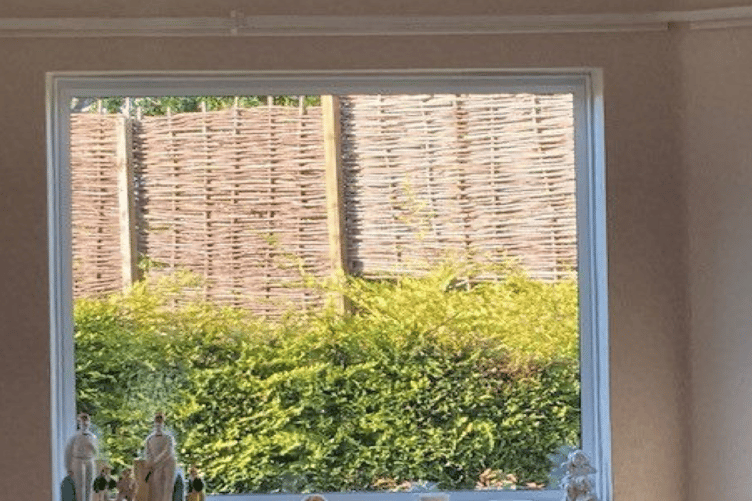A WEST Somerset man has been ordered to take down fencing he erected which ‘blocked’ the view from a neighbour’s window.
Marten Street was refused retrospective permission by Somerset Council to erect woven hazel fencing around Chapel Cleeve Manor - work he had already carried out - and after a successful appeal must now tear it down.
The building, which Mr Street owns, dates to the medieval period, when it served as a pilgrim’s hospital. Mr Street built the fencing, he said, to cover gaps in the perimeter hedges. However, when it emerged the building was Grade II listed, it became apparent the works would require planning permission.
Lodging their objections with Somerset Council over the development was neighbour Sarah Wilsher. Writing to the local authority she claimed the works were blocking light from entering her home.
She said: “Being so very close to the property boundary and in line with the windows of principal living room accommodation, the structure is obscuring light and therefore restricting our enjoyment of our property.
“Furthermore, we note that the proposal is to extend this structure further, in front of our other living accommodation. If the application were to be successful, this would cause significant additional harm.”
Another resident accused the construction of being “domineering and overbearing” and that they were “interfering with the quiet enjoyment of a neighbour's property.” A third objector said the fences threatened the “ruination of a lovely couple’s home.”
Making his representations to planners, Mr Street, who signed off his letter as the “custodian” of the site, pledged the fences would: “Protect the manor setting and secure a parkland setting once more. It will be lovely to look at from both sides and that’s a promise. I’m happy to plant a selection of smaller trees in that corner to soften it even further.”
Mr Street said the fences could and would be beautified in time by “sweet smelling honeysuckle” and added: “My sole goal is to do what is right for the manor’s parkland setting and the hazel fence helps do that while the parkland has time to grow around it once more.
“If the fence is not there the only option is for me to plant a variety of established grown mature trees.”
However, Somerset Council appeared to agree with some of the criticism over the fences, and branded the development “unneighbourly.” Officials ordered Mr Street to remove the fences within three months.
Issuing their verdict, they said: “Planning permission is refused by virtue of the unneighbourly development of the fencing, which creates an overbearing and domineering impact, restricting outlook and harming the residents' enjoyment of Dancing Gate.”
It comes after planning agent Adam Elston, of Architectural Studio SW Ltd, who was acting on behalf of Mr Street, said the new 6.5 ft high fencing, constructed atop manmade earth mounds, would ‘improve security and recreate a sense of privacy for the occupants of the manor while also screening it from the neighbouring property.’





Comments
This article has no comments yet. Be the first to leave a comment.